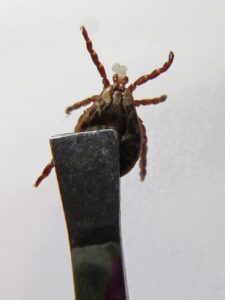Fleas are an unfortunate part of pet ownership, and these tiny pests can quickly become an unpleasant nuisance for your animals and for your home. In fact, fleas reproduce so abundantly that a single flea is capable of causing an epidemic. Although there are many preventative treatments readily available, most pet owners will experience at least one flea infestation during their lifetime, and knowing how to control and eradicate these nasty little parasites from your home is essential.
What Are Fleas?
Small and wingless, fleas are parasites that survive by ingesting the blood of their host – and if they are in your home this means that your pets and your human family are their main source of food! Fleas have the ability to jump nearly a foot high, making it easy for them to catch a ride into your home on your dog or cat. They tend to prefer warm temperatures and high humidity, meaning that infestations are much more likely in the summer months.
One of the main problems with fleas is the bites that they give their hosts. Flea saliva contains toxins which can irritate yours and your pet’s skin, causing it to itch. In fact, flea allergies are among the most common allergies seen in animals.
Signs Of A Flea Infestation
Fleas are virtually microscopic, making them very difficult to spot. They usually congregate around the ears and tail of pets, buried deep within the fur. Many owners find it easier to look for flea dirt. This is actually fecal matter from the fleas that looks like dried mud or dirt. The way to tell the difference is to take a little of the dirt, moisten it and spread it over a white paper towel. If it appears red, then it is flea excrement, as it is comprised primarily of ingested blood.
The humans in your family may also show some signs that fleas are present in your home as they leave itchy bite marks on your body. These are most often found around the ankles and on the lower legs.
How To Control A Flea Infestation
So, you’ve identified that you have a flea problem in your home. What next?
It is important to understand is that flea infestations are rarely localized, and fleas can survive without a host for many months. This means that when you get rid of them, you will need to treat your entire house, and your pets, at the same time. This should ensure that you eradicate all fleas, regardless of which stage of their lifecycle they are at.
The first thing that you should do is to treat your pet for live fleas. There are many different flea treatment products on the market and your veterinarian will be able to advise you which is the best choice to treat your specific animal. It is essential to follow these instructions carefully, as some insecticides which are safe for use on dogs can be highly toxic to cats.
Then it is time to tackle your house, which could contain flea eggs, larvae and pupae as well as live parasites. Fleas love soft furnishings, so your sofas, carpets, curtains and cushions are all prime spots for fleas. However, you will have to workover the entire house to ensure that all fleas have been removed. Strip and wash all bedding, towels and other similar items that may be around your home. Skirting boards, floorboards, carpet and furniture should all be thoroughly vacuumed, with the dust bag from your vacuum cleaner thrown away after every use to prevent fleas from escaping back out into your home.
Once all of the fleas have been removed from your home and you are confident the infestation has been dealt with, ensure that you get your pet prompt Preventative Treatment to protect you from further parasite problems. Contact Country Veterinary Clinic for more information about flea infestation.



